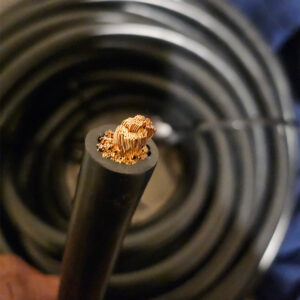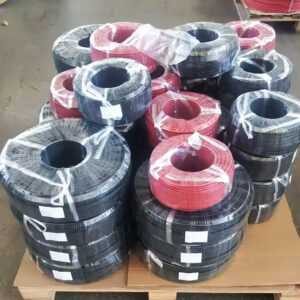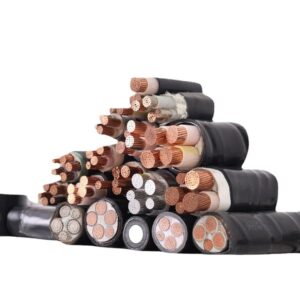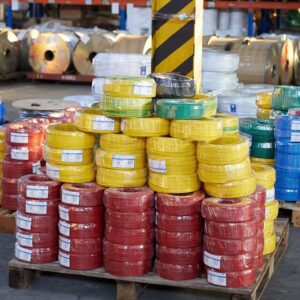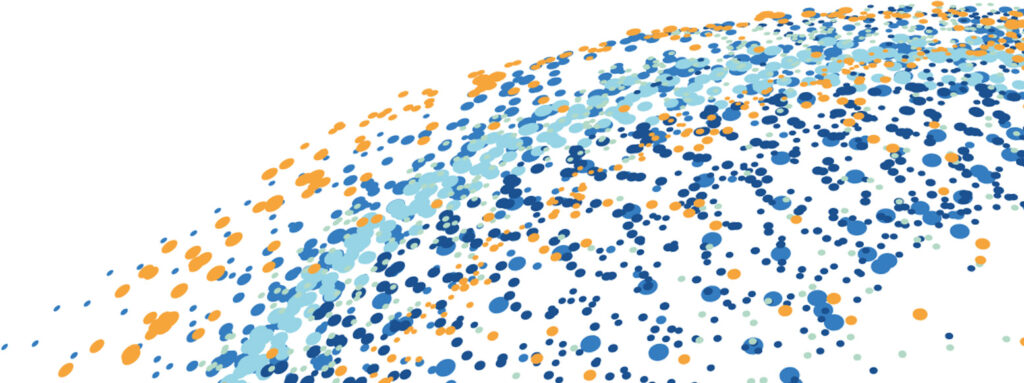Mining cables represent some of the most expensive specialty cables on the market – but when failure means catastrophic downtime or safety hazards, their cost becomes an investment in reliability. Mining cable exemplifies why specialty cables carry premium price tags: engineered to withstand crushing loads, chemical exposure, and extreme temperatures, these cables incorporate advanced materials and rigorous certifications that standard wires simply can’t match. In this article, we’ll break down the key factors driving specialty cable costs and why they deliver unmatched value in critical applications.
1. Material Costs: The Foundation of Durability
Specialty cables use advanced materials that cost 3-5x more than standard alternatives:
- Reinforced Jacketing: Mining cables feature abrasion-resistant compounds like CSPE (Chlorosulfonated Polyethylene) or PUR (Polyurethane) that withstand rock abrasion and fuel/oil exposure.
- Heavy-Duty Shielding: Multiple braided copper layers protect against EMI in electrically noisy mining environments.
- Thermal-Resistant Insulation: XLPE or EPR materials maintain flexibility at -50°C to +90°C.
Standard cable vs. mining cable material cost comparison:
Component Standard Cable Cable De Minería Jacket PVC ($0.5/kg) PUR ($3.2/kg) Insulation PVC EPR ($4.1/kg) Shielding None Dual copper braid
(Source: ICBA Wire & Cable Conference 2023 Proceedings)
2. Engineering & Certification Overhead
Developing specialty cables involves extensive R&D and testing:
- Scenario Testing: Cables undergo simulated mining conditions – repeated crushing (UL 1277 test), bend cycling, and flame resistance trials (IEC 60332).
- Certification Costs: MSHA (Mine Safety and Health Administration) approval alone adds 15-20% to product costs.
- Custom Tooling: Extrusion lines for heavy jacketing require $500K+ investments.
Example: MSHA-certified mining cables undergo 6-12 months of validation before market release.
3. Low-Volume Production Economics
Unlike mass-produced building wires, specialty cables face:
- Batch Production: Mining cables are made in limited runs (often <10,000 ft per SKU).
- Complex Manufacturing: Layering shielding/armoring requires specialized machinery.
- Inventory Costs: Suppliers stock niche variants (e.g., 5kV vs. 15kV ratings).
“Producing mining cable costs 40% more per meter than standard power cable due to setup complexity.”
– Electrical Engineering Times
4. The Hidden Value: Total Cost of Ownership
While specialty cables cost more upfront, they save exponentially over time:
| Cost Factor | Standard Cable | Specialty Mining Cable |
|---|---|---|
| Replacement Frequency | Every 1-2 years | 10-15+ years |
| Downtime Cost | $10K-$50K/hour in mines | Near-zero unplanned outages |
| Safety Risks | High (fire/electrocution) | MSHA-compliant safety |
Real-World Impact: A Chilean copper mine reduced cable-related downtime by 92% after switching to premium MSHA-certified cables.
5. Regulatory Compliance: Non-Negotiable Expenses
Mining cables must meet stringent global standards:
- MSHA 30 CFR Part 18 (US) – Flame resistance and durability tests
- IEC 60092-350 (International) – Shipboard/mining cable requirements
- CAN/CSA C22.2 No. 96 (Canada) – Portable power cables
Certification renewals and audits add recurring costs – but prevent $500K+ OSHA fines for non-compliance.
Conclusion: Premium Cables as Insurance
Mining cable costs reflect engineered resilience that prevents far greater losses. From specialized materials to rigorous certifications, every dollar spent translates to:
✅ Safety – Protecting workers in hazardous environments
✅ Reliability – Avoiding $100K+/hour mining downtime
✅ Longevity – Outlasting standard cables 8:1
As mining operations push deeper into extreme environments, investing in purpose-built cables isn’t an expense – it’s operational insurance.
Have questions about selecting cost-effective specialty cables? Our engineers are ready to help!


